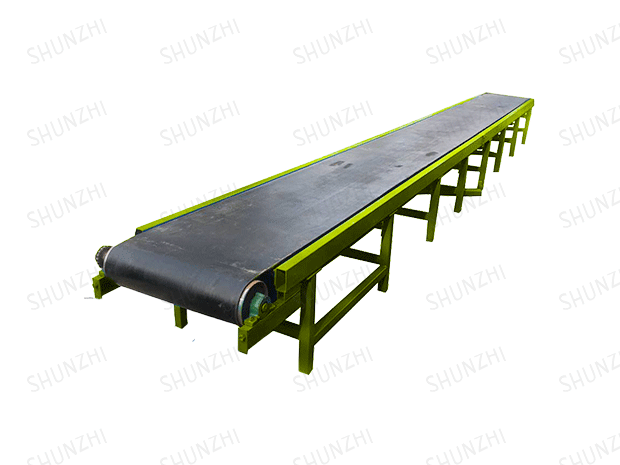





Brand: SHUNZHI
Model: B500/B650/B800/B1000
Power: 3kw/4kw/5.5kw/7.5kw
Use: Fertilizer Transferring
A belt conveyor is a friction-driven machine that transports materials in a continuous manner. It is mainly composed of frame, conveyor belt, idler, roller, tensioning device, transmission device, etc. It can form a material conveying process from the initial feeding point to the final unloading point on a certain conveying line. It can not only carry out the transportation of broken and bulk materials, but also can carry out the transportation of pieces of goods. In addition to pure material transportation, it can also cooperate with the requirements of the technological process in the production process of various industrial enterprises to form a rhythmic assembly line.
Belt conveyor is also known as belt conveyor. The conveyor belt moves according to the principle of frictional transmission. It is suitable for conveying powdery, granular and small-sized low-abrasive materials and bagged materials that are easy to pick up, such as coal and gravel. , sand, cement, fertilizer, grain, etc. The belt conveyor can be used in the range of ambient temperature -20℃ to +40℃, and the temperature of the material being sent is less than 60℃. The length and assembly form of the machine can be determined according to the user's requirements. The transmission can be either an electric drum or a drive device with a drive frame.
The belt conveyor is mainly composed of two end rollers and a closed conveyor belt tightly sleeved on it. The roller that drives the conveyor belt to rotate is called the driving roller (transmission roller); the other roller that only changes the direction of movement of the conveyor belt is called the redirecting roller. The driving roller is driven by the motor through the reducer, and the conveyor belt is dragged by the friction between the driving roller and the conveyor belt. The drive drum is generally installed at the discharge end to increase the traction force and facilitate dragging. The material is fed from the feeding end, falls on the rotating conveyor belt, and is transported to the unloading end to be discharged by the friction of the conveyor belt.
1. Strong conveying capacity, long conveying distance, reliable operation, easy to realize automation and centralized control;
2. The structure is relatively simple, easy to maintain, and the interchangeability and versatility of main components are strong;
3. The conveying is stable and reliable, and there is no relative movement between the material and the conveyor belt, which can avoid damage to the conveyed material;
4. Equipment with special requirements for heat resistance, cold resistance, waterproof, anti-corrosion, explosion-proof, flame retardant, etc. can be customized according to different conveying processes and working environments;
5. Low noise, suitable for occasions where the working environment is relatively quiet;
6. The conveying range is wide, which can continuously convey wet, dry, powdery and bulk materials and finished items.
| Model | Conveying length (m) | Conveying capacity (m³/h) |
| B500 | 2~240 | 69~217 |
| B650 | 2~240 | 127~397 |
| B800 | 2~240 | 198~781 |
| B1000 | 2~240 | 324~1622 |
Overseas marketing outsourcing services for small and medium-sized enterprises.